A living room serves as the heart of a home, a place where families gather, guests are entertained, and relaxation is paramount. Choosing the right color palette can significantly enhance the ambiance of this central space. Blue, often associated with tranquility and depth, is a versatile choice that offers a broad spectrum of shades, each capable of creating a distinct mood in a living room. From the soft whisper of powder blue to the deep echo of navy, blue hues can invoke serenity, foster conversation, and anchor the aesthetics of a space.
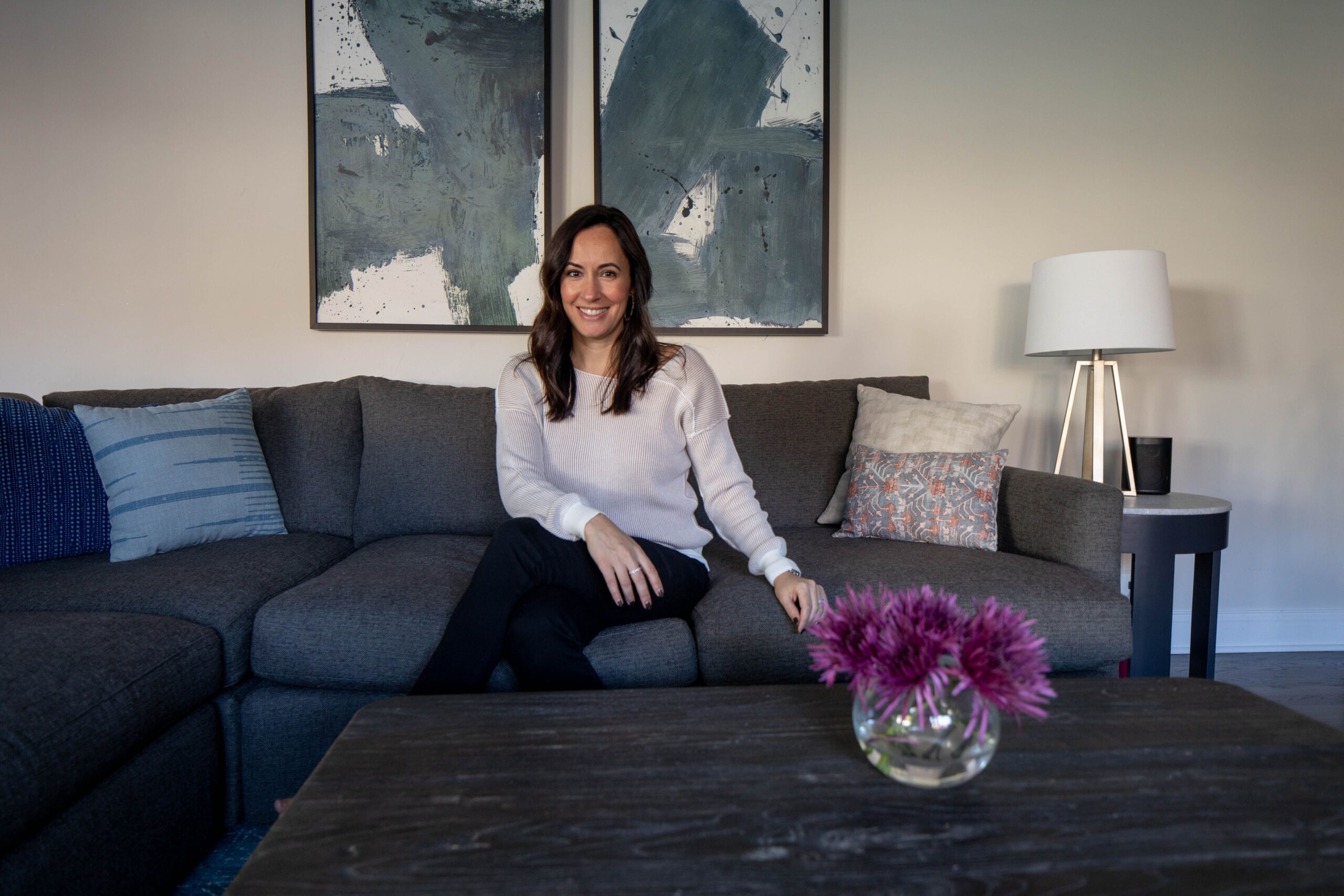
Incorporating blue into a living room can be approached in various ways. It can be the dominant shade that swathes the walls and large furniture pieces, or act as an accent through drapery, cushions, artwork, and decorative items. Texture plays a crucial role in how blue is perceived; a velvet navy sofa imparts richness, while a breezy azure curtain can bring in lightness and airiness. The color’s adaptability means it pairs wonderfully with a range of complementary colors, such as crisp whites, warm creams, or even bold yellows, providing numerous design pathways.
Designers often employ blue to create a theme that resonates with a homeowner’s personal style. Whether aiming for a coastal vibe by mirroring the hues of the ocean, a classic look with traditional blue toile patterns, or a modern minimalist approach using sleek navy furniture against stark white walls, blue can suit an array of living room designs. It is this flexibility and the depth of options within the blue color family that affords endless possibilities when revitalizing a living room.
Defining Blue in Home Decor
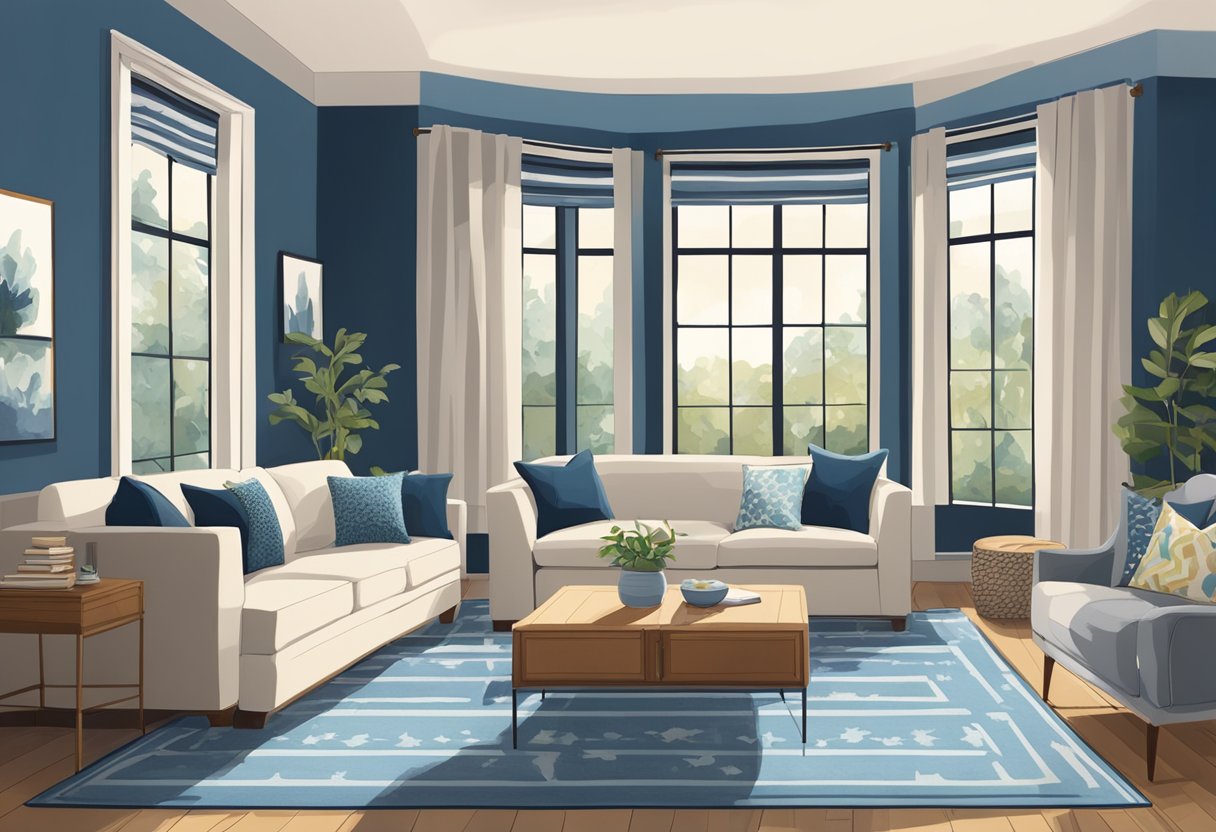
In the realm of home decor, blue is revered for its versatility and psychological impacts, offering a spectrum of shades that can suit a variety of design preferences.
The Psychology of Blue
Blue is often associated with feelings of calmness and serenity. It is thought to have a soothing effect on the mind, evoking a sense of tranquility. In home decor, blue can contribute to a restful environment, making it a popular choice for bedrooms and bathrooms.
- Calmness: Shades like sky blue or soft azure can create a peaceful atmosphere.
- Productivity: Darker blues, such as navy, are said to foster concentration.
Blue Color Palettes
The range of blue shades allows for extensive palette options, each setting a different mood and style in a living room.
- Light and Airy: Pale blues paired with whites can make a room feel open and breezy.
- Bold and Dramatic: Combining deep blues with rich accents, like gold or silver, can introduce a luxurious feel.
| Blue Shades | Complementary Colors | Mood Set |
|---|---|---|
| Baby Blue | Soft Gray, Pale Pink | Gentle & Welcoming |
| Royal Blue | Warm Yellows, Burnt Orange | Vibrant & Energetic |
| Midnight Blue | Deep Greens, Burgundy | Mysterious & Intimate |
Designing Your Blue Living Room
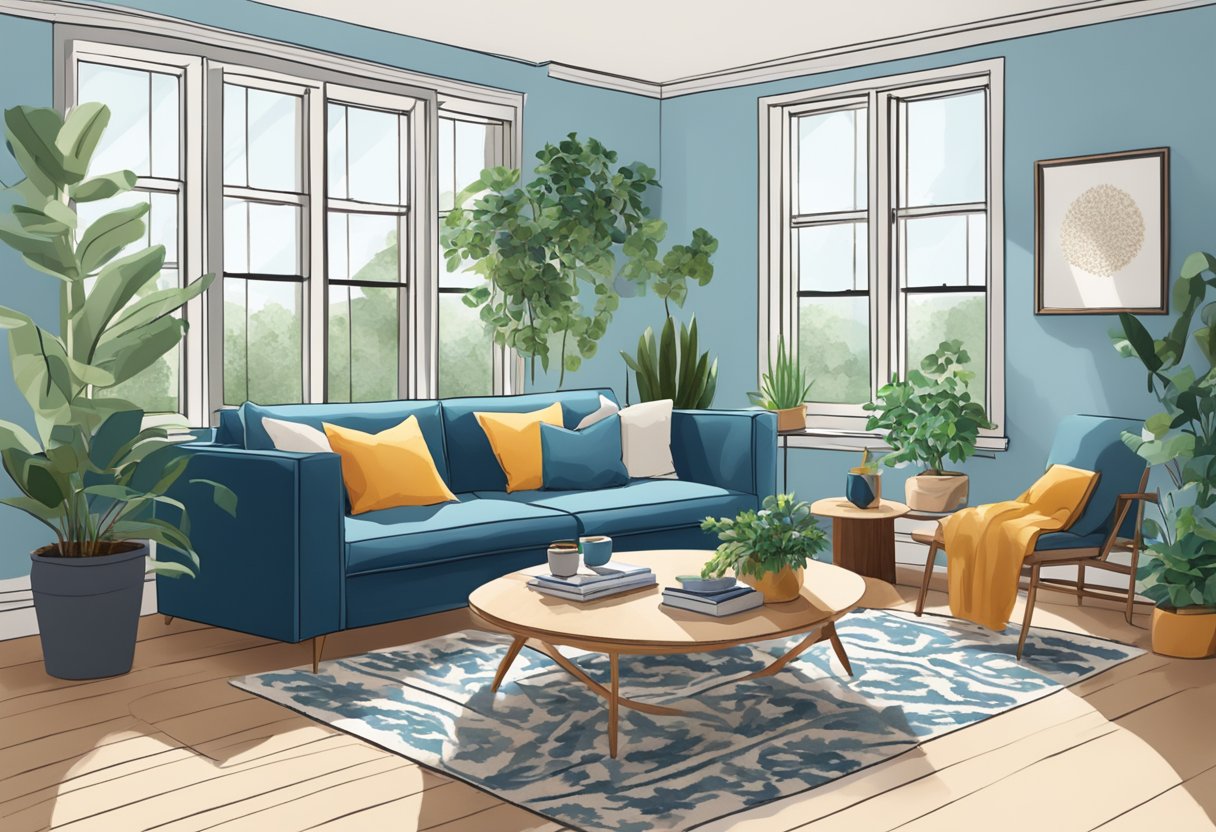
Creating a cohesive blue living room involves thoughtful selection of furniture, choosing the right wall treatments, and deciding on the best flooring to complement the overall aesthetic.
Furniture Selection
When selecting furniture for a blue living room, one should aim for balance and contrast. A navy blue sofa can serve as a focal point, while accent chairs in lighter shades like sky blue add visual interest. For cohesion, incorporate neutral-toned pieces such as beige ottomans or gray coffee tables, which won’t overwhelm the blue palette.
- Focal Point: Navy blue sofa
- Accent Chairs: Sky blue, powder blue, teal
- Neutral Pieces: Beige ottomans, gray coffee tables, cream side tables
Wall Colors and Treatments
The walls offer a backdrop that can either amplify or soften the intensity of a blue living room. Opt for pale blue on walls to create a serene atmosphere or midnight blue for a dramatic effect. For those not ready to commit to full color, consider blue accent walls or wallpaper with subtle blue patterns.
- Wall Colors: Pale blue for tranquility, midnight blue for drama
- Accent Walls: One wall in a bold blue shade
- Wallpaper: Geometric patterns, floral prints with blue motifs
Flooring Ideas
Flooring should complement the blue tones without competing for attention. Consider light hardwood or laminate for warmth, or cool gray tiles for a modern touch. For added texture, area rugs in shades such as ivory or taupe can be placed to define seating areas.
- Hardwood: Light-toned oak or maple
- Tile: Gray slate or ceramic
- Area Rugs: Ivory, taupe, or muted blue patterns
Lighting and Accents

In a blue living room, lighting choices and accents can significantly enhance the ambiance. Carefully selected fixtures, natural light, and decor elements should complement the blue tones to create a cohesive and inviting space.
Natural Lighting
Maximizing natural lighting is crucial; it can bring out the vibrant hues of a blue living room. Sheer curtains or light shades allow for ample sunlight to filter through, enhancing the overall openness and freshness of the room. Placement of mirrors strategically across from windows can double the light entering the room, giving the blue decor a lively sparkle.
Lamps and Overhead Lighting
Lamps and overhead lighting play key roles in layering the room’s illumination.
- Table and floor lamps: Select with blue ceramic or metal finishes to synchronize with the room’s color scheme.
- Overhead lighting: A statement chandelier or simple recessed lights enrich the elegance of the blue decor.
- Brightness: Dimmable LED bulbs cater to different moods and times of the day.
Decorative Accents
Decorative accents can tie the whole room together. Here are specific examples:
- Blue throw pillows: Provide contrast on lighter furniture.
- Wall art: Choose pieces that feature shades of blue to maintain the color palette.
- Metal elements: Gold or silver frames and fixtures add a touch of luxury without overwhelming the blue theme.
Use of accents should be thematic and consistent to maintain a harmonious look.
Textiles and Fabrics
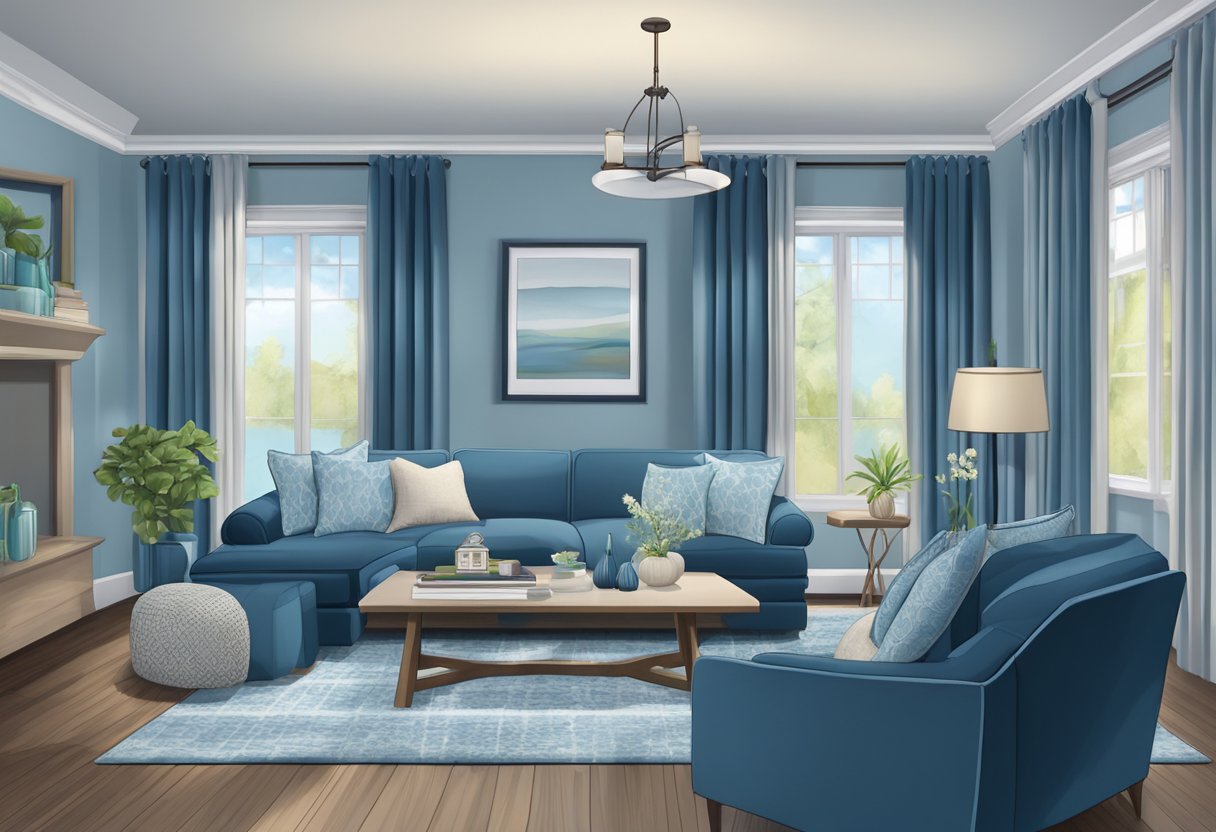
Textiles and fabrics are essential elements in creating a cohesive look in a blue living room. They add texture, comfort, and color depth to the space.
Curtains and Drapes
Curtains and drapes dictate the light and set the tone in a living room. For a blue-themed room, one might consider sheer navy curtains for a light, airy feel, or thick, royal blue drapes to add a sense of luxury and warmth.
- Material: Opt for natural fibers like cotton or silk for elegance.
- Patterns: Consider stripes or geometric patterns to add visual interest.
Rugs and Carpets
Rugs and carpets anchor the room and offer an opportunity to introduce different shades of blue or contrasting colors.
| Type | Description | Material |
|---|---|---|
| Area Rug | Adds definition to seating areas. | Wool, for durability |
| Wall-to-Wall Carpet | Provides a uniform look and feels cozy underfoot. | Nylon, for stain-resistance |
- Pattern: A subtle blue-and-white chevron pattern can be a striking choice.
- Placement: Center the rug under the main coffee table to unify the seating arrangement.
Throw Pillows and Blankets
These smaller accents are an effective way to integrate various blue hues and textures without overwhelming the space.
- Textures: Mix materials like velvet for luxury and knit for comfort.
- Color Palette: Use a range of blues from sky blue throw pillows to indigo blankets to create depth.
- Function & Style: Consider both aesthetics and comfort; a cable-knit blanket offers warmth while adding a tactile dimension to the setting.
Artwork and Wall Decor
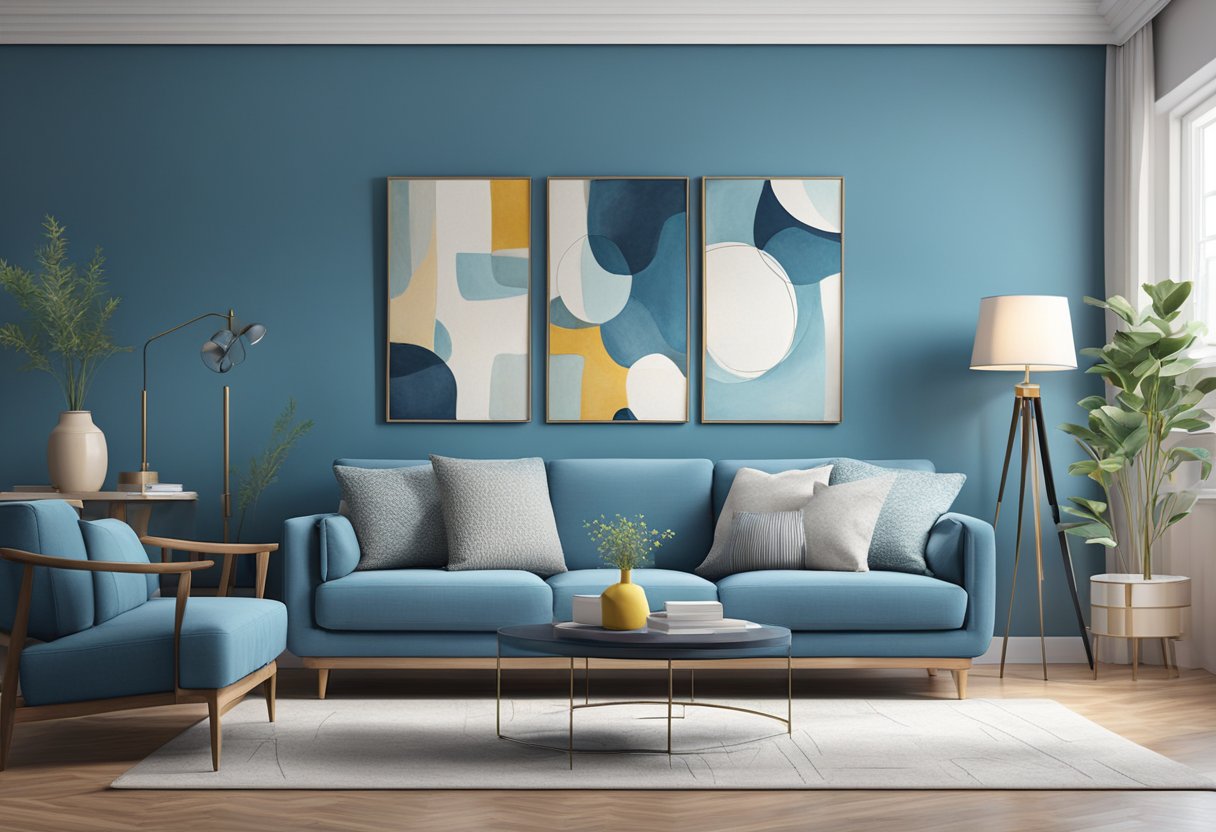
In a blue living room, the artwork and wall decor are crucial for adding depth and character. It is recommended to select pieces that either complement or skillfully contrast with the room’s color palette.
- Color Coordination: Opt for artwork with hints of blue to create a cohesive look.
- Contrasting Colors: Incorporate yellows or oranges in art pieces to introduce warmth.
Wall decor should not overpower the blue theme. Instead, it should enhance the room’s atmosphere. Here are some ideas:
- Canvas Prints: Large-scale landscapes or abstracts with blue elements.
- Metal Wall Art: Geometric designs or nautical motifs add texture.
- Gallery Wall: A collection of small to medium-sized frames; mix photographs with graphic prints.
- Mirrors: A framed mirror can break visual monotony and reflect light.
Using different materials and textures in wall decor can add visual interest to a blue living room:
- Wood: Brings a natural, rustic feel.
- Glass: Offers a sleek, modern touch.
- Fabric: Tapestries or woven wall hangings soften the look.
Placement and spacing are key to ensuring artwork and wall decor contribute positively to the living room’s ambiance. Wall pieces should be hung at eye level, and it’s advisable to leave space around each piece to prevent a cluttered appearance. Adequate lighting, such as focused spotlights, can enhance the impact of the artwork and wall decor, ensuring they are prime features in the blue living room.
Incorporating Technology
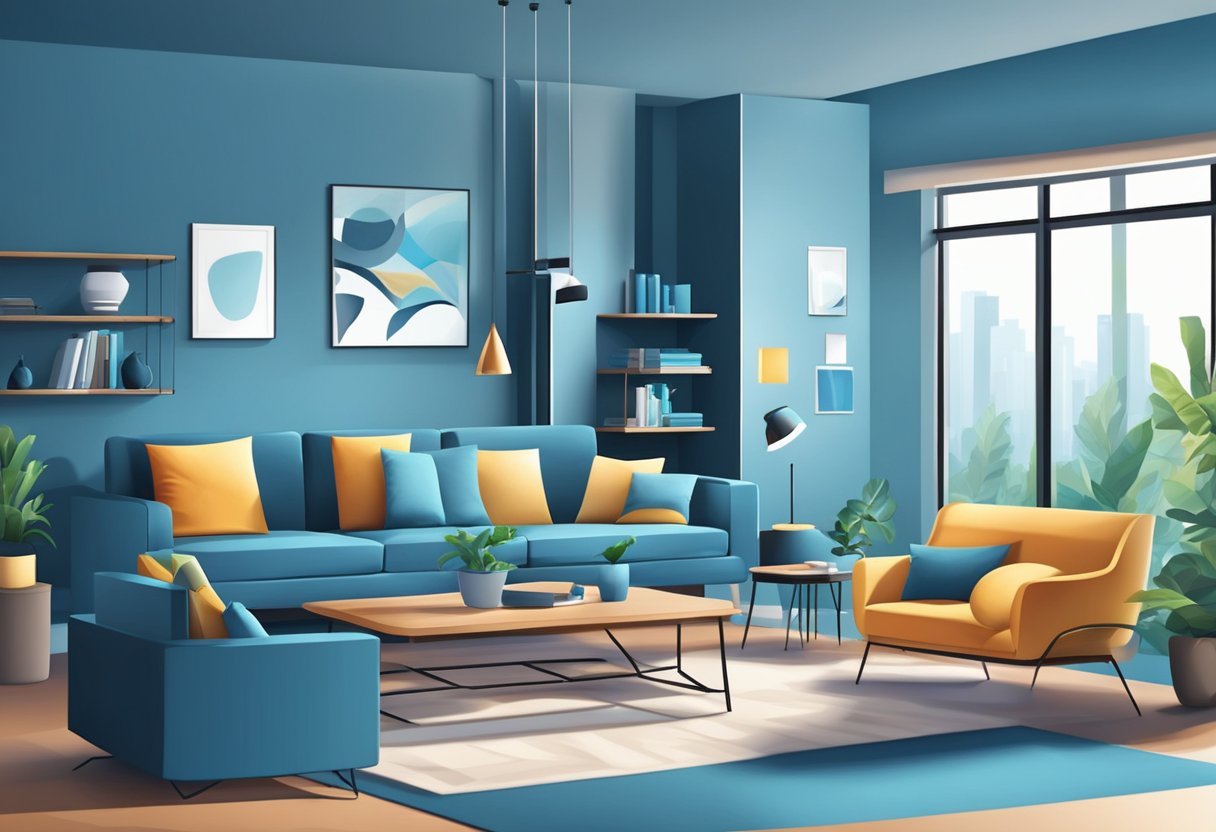
In the modern living room, technology integration is essential, yet it should blend seamlessly with the blue aesthetic. Smart televisions and sound systems are often the focal points. One may mount a sleek, frameless TV against a deep blue wall to create a sense of continuity. For speakers, consider in-wall options that don’t detract from the blue theme.
Lighting control systems are crucial. They offer the ability to adjust ambience while maintaining the color scheme. Smart LED bulbs that can shift hues to complement different shades of blue are recommended.
| Technology | Description | Integration Suggestion |
|---|---|---|
| Smart Home Assistants | Voice-controlled devices for managing the home. | Choose versions in blue or neutral tones. |
| Automated Blinds | Window coverings that can be controlled remotely. | Install with blue fabric to match decor. |
| Wireless Charging Pads | Devices for charging smartphones and tablets wirelessly. | Place on side tables with blue accents. |
Strategic placement of technology can maintain the room’s aesthetic. Speakers and charging pads can be hidden or blended into the design. Cords and cables should be managed through discreet channels or by using cord covers painted in the room’s blue tones.
For the tech-savvy, smart furniture with built-in charging ports and Bluetooth capabilities can be a stylish and functional addition. When choosing gadgets and accessories, one should prioritize items that boast a minimalist design to keep the space looking uncluttered and serene.
Technology in a blue living room should not only be functional but also enhance the overall design by being thoughtfully incorporated into the existing color scheme and layout.
Plants and Greenery
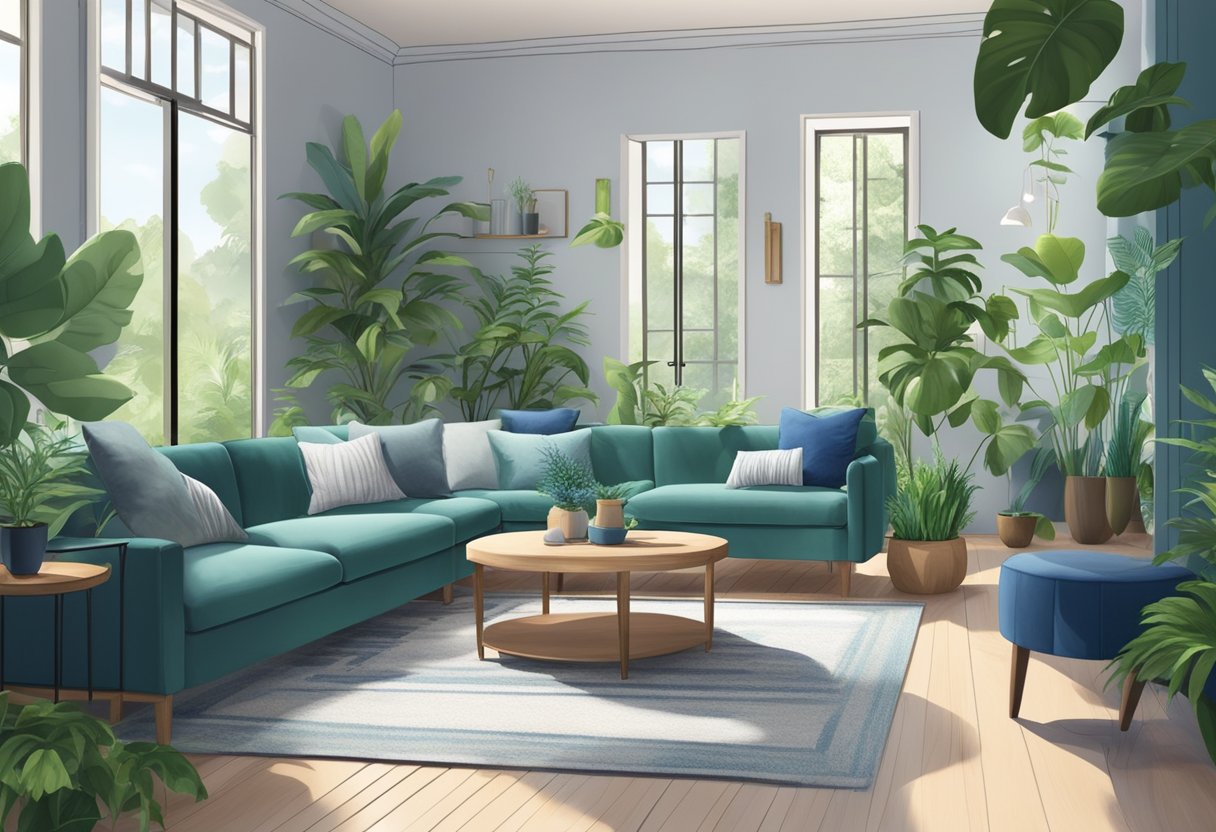
Incorporating plants into a blue living room can breathe life into the space. The contrast between blue hues and vibrant greenery creates a balanced and refreshing atmosphere.
Selection of Plants:
- Fiddle Leaf Fig: Known for its broad, glossy leaves, it makes a bold statement.
- Snake Plant: A durable option that requires minimal maintenance.
- Peace Lily: Offers elegant white blooms with minimal sunlight needs.
Placement Ideas:
- Shelves and Mantles: Small potted plants like succulents or air plants can be placed here.
- Floor Areas: Larger plants such as the fiddle leaf fig or a potted palm can fill corners effectively.
- Hanging Planters: Add visual interest by suspending plants like spider plants or Boston ferns from the ceiling.
Plant Care:
- Watering: Schedule varies by plant; overwatering can be as harmful as under-watering.
- Light: Ensure plants receive appropriate levels of sunlight, whether it’s direct or indirect.
- Potting: Use the right-sized pots with drainage holes to prevent waterlogging.
Utilizing a mixture of plant types and placements can enhance the overall aesthetic of a blue living room. They also contribute to improved air quality and can provide a calming effect, making the living room a more inviting space.
Maintenance and Upkeep
When one opts for a blue living room, they choose a color that is both serene and versatile. Keeping this space looking its best requires regular maintenance. Below are practical tips for upkeep.
Upholstery:
For blue fabric sofas and chairs, vacuuming weekly will remove dust and prevent dirt from settling. Spot clean with mild detergent and water for any spills, and consider professional cleaning annually.
Walls:
One can easily clean painted walls with a mixture of mild soap and water. However, one should test a small area first to ensure the paint finish isn’t compromised.
Carpets:
Regular vacuuming is crucial for maintaining the appearance of blue carpets. Treat stains promptly with carpet cleaner, adhering to the manufacturer’s instructions.
Curtains and Blinds:
Dust and lightly vacuum window treatments monthly. Heavier drapes may require professional cleaning, while lighter materials can often be washed at home following the label’s care instructions.
| Surface | Maintenance Action | Frequency |
|---|---|---|
| Upholstery | Vacuuming | Weekly |
| Spot Cleaning | As needed | |
| Professional Cleaning | Annually | |
| Walls | Mild Soap and Water | As needed |
| Carpets | Vacuuming | Bi-weekly |
| Stain Treatment | Immediately | |
| Curtains | Vacuuming | Monthly |
| Washing/Professional | As per label |
For accessories such as cushions and throws, a weekly shake out aids in keeping them dust-free. Items amenable to machine wash should be cleaned as per their care tags to preserve the vibrancy of the blue.
By adhering to these maintenance steps, one can ensure their blue living room remains a tranquil, inviting space for years to come.
